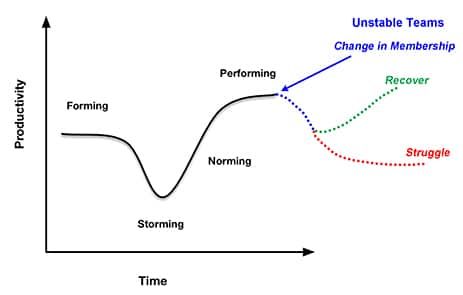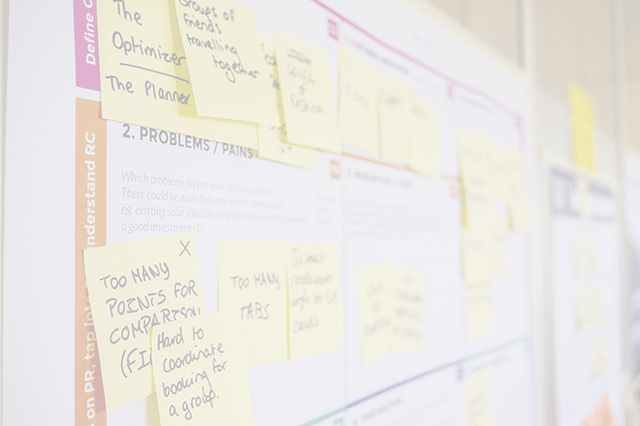Team Formation Models
Team Formation Models are helpful in understanding what state a team is at, and then using that information to make an educated guess as to what will help them progress. There are a large number of models to be found, however many of them don’t appear to offer any evidence to support their validity.

The Tuckman Model is the one I refer to most often:
- Forming- starting point, coming together, unsure things will work, avoid conflict
- Storming - getting to know each other, role conflict, stepping on each other’s toes, disagreement how the team should work
- Norming - starting to find a rhythm, give/receive feedback, roles clarified, approach to work is starting to be well-defined
- Performing - the team members are in sync, it is like the team has developed a mind of its own. It’s now able to get a lot more work done as a team than as individuals. There is a sense of camaraderie.
- Adjourning - the team is broken up at the end and they mourn
Not all groups go through all stages. It is also possible to slide back from one stage to another (e.g. from Norming to Storming). This usually happens when there is a shock to the system, such as a change in team membership, radical change in goals, or change in how the team is handled by management.
At different stages, different tools will be important. Forming: need to find a common goal (i.e. Product Vision, Working Agreements), Storming: we need to support understanding each other (i.e. Facilitation, Active Listening), Norming: we need to find better ways of working together (i.e. Cross-Skilling, Engineering Practice Improvement), Performing: take a bow and then continue improvement work. Adjourning: we recommend long-running Stable Teams so there is nothing special to recommend around adjourning.
We use Tuckman’s as it is the model that has the largest body of research, testing its validity.
Other models to consider, with at least some research to back them: - GRPI Model - Goals, Roles, Processes, Interpersonal Relationships - Rubin, Plovnick and Fry - T7 Model of Team Effectiveness - Lombardo and Eichinger
Avoid these models as they are either not research backed or the research invalidates them: - Lencioni Model - not research backed - DiSC Model - was developed as Personality Testing Model, not a Team model. Even its original realm of personality testing has flaws, please don’t use it
Agile Pain Relief Blog Entries
Resource Links
- 8 Models of Team Effectiveness
- Caution: some of the models they mention are not well validated - Behavioral Hypothesis of Team Behavior - Petri Heiramo - Final.pdf
- This is a PDF from a workshop presentation - Phases in Building Agile Teams with Tuckman’s Group Development
- The Stages of Group Formation, and how they Aid Your Teams Success
- Tuckman Model of Team Development: A Detailed Blueprint to Build Awesome Teams
- Understand Teams by Using the GRPI Model
- Understanding the Tuckman Model of Team Development
